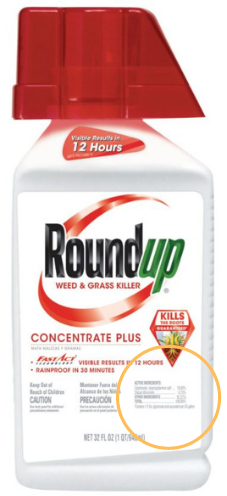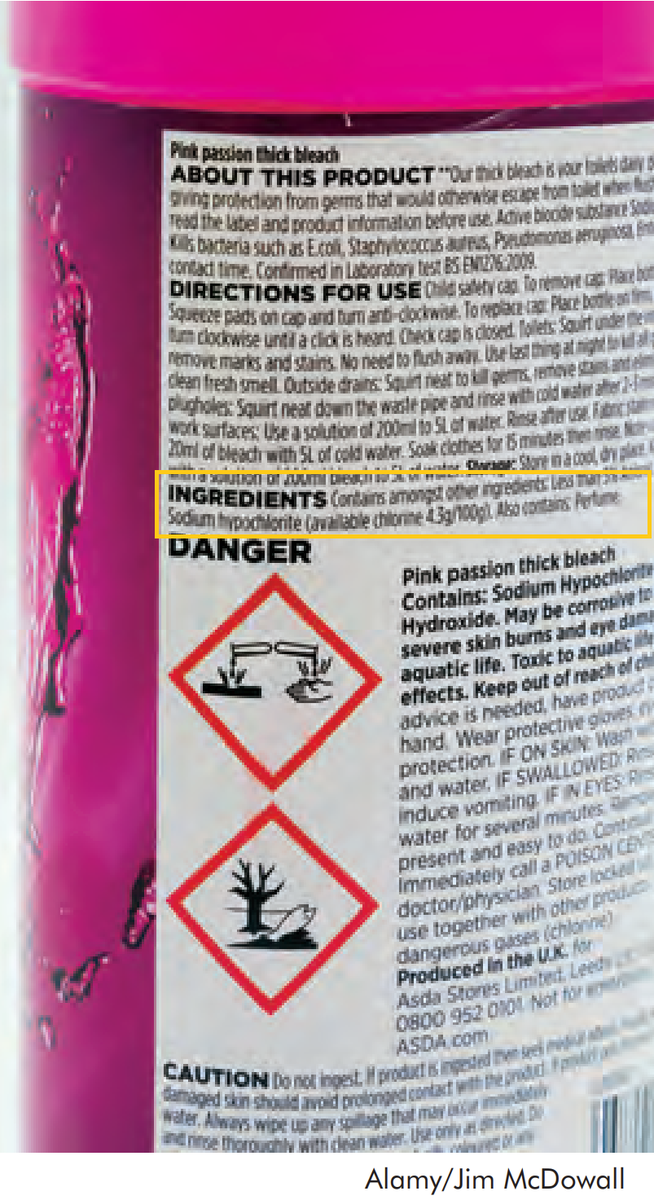Gateway on Pesticide Hazards and Safe Pest Management
How To Find Ingredients in Pesticide Products
Beyond Pesticides offers resources below to evaluate the health and ecological effects of specific chemical exposure from ACTIVE INGREDIENTS in pesticide products, as well as regulatory information and supporting scientific documents. Because various pesticide products can contain more than one active ingredient, it is important to READ the LABEL to determine chemical components.
With 192 different active ingredients and counting, it is essential to establish the connection between the use of these chemicals and their respective hazards.
View the step-by-step guide on how to search for the active ingredient(s) in pesticide products below:
- Go to U.S. EPA's Pesticide Product and Label System and enter the product name. The generic product name may vary.
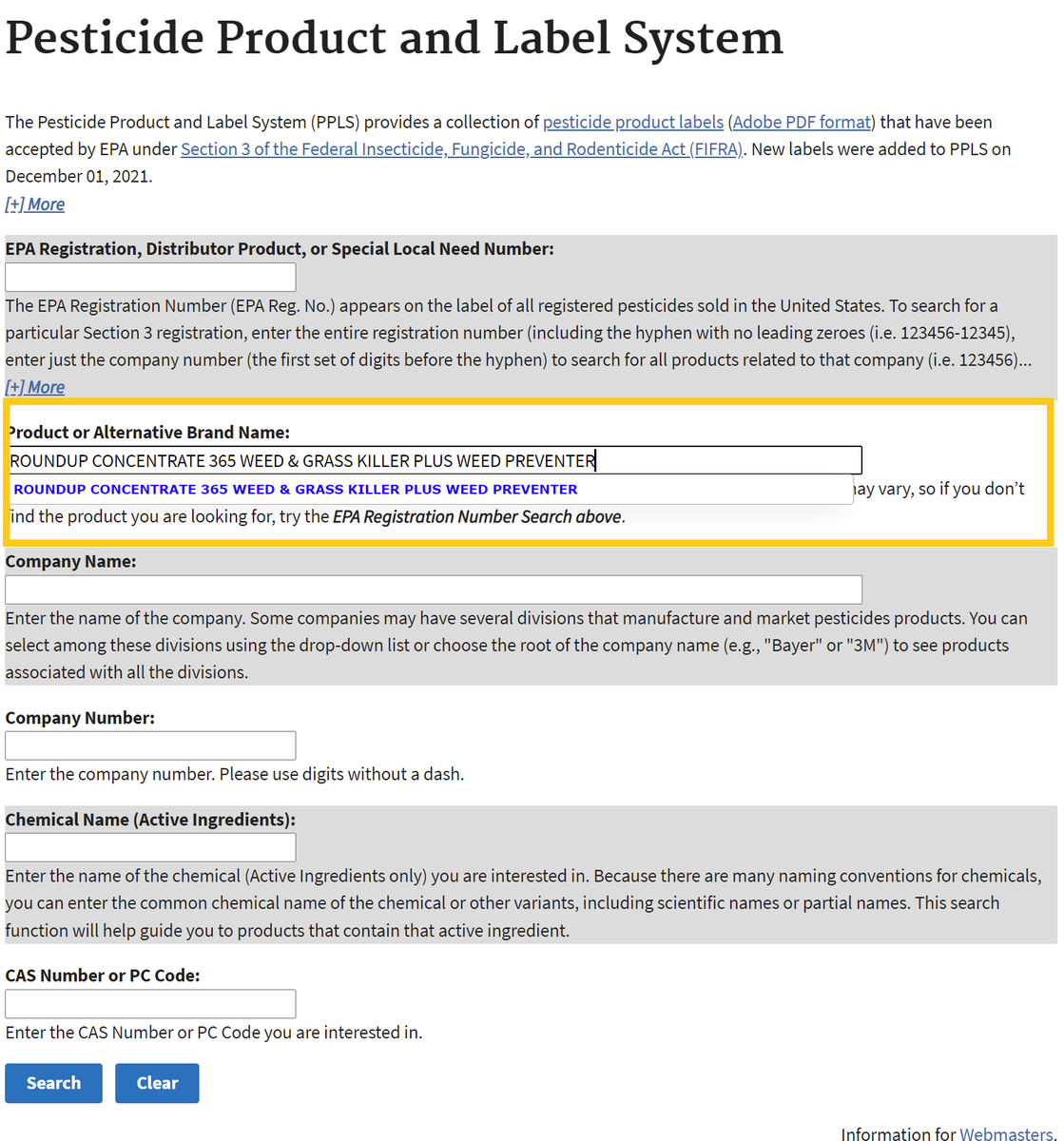
- After searching, click on the chemical ingredients tab or the link for the most recent label to find Active Ingredients.
Chemical List Label List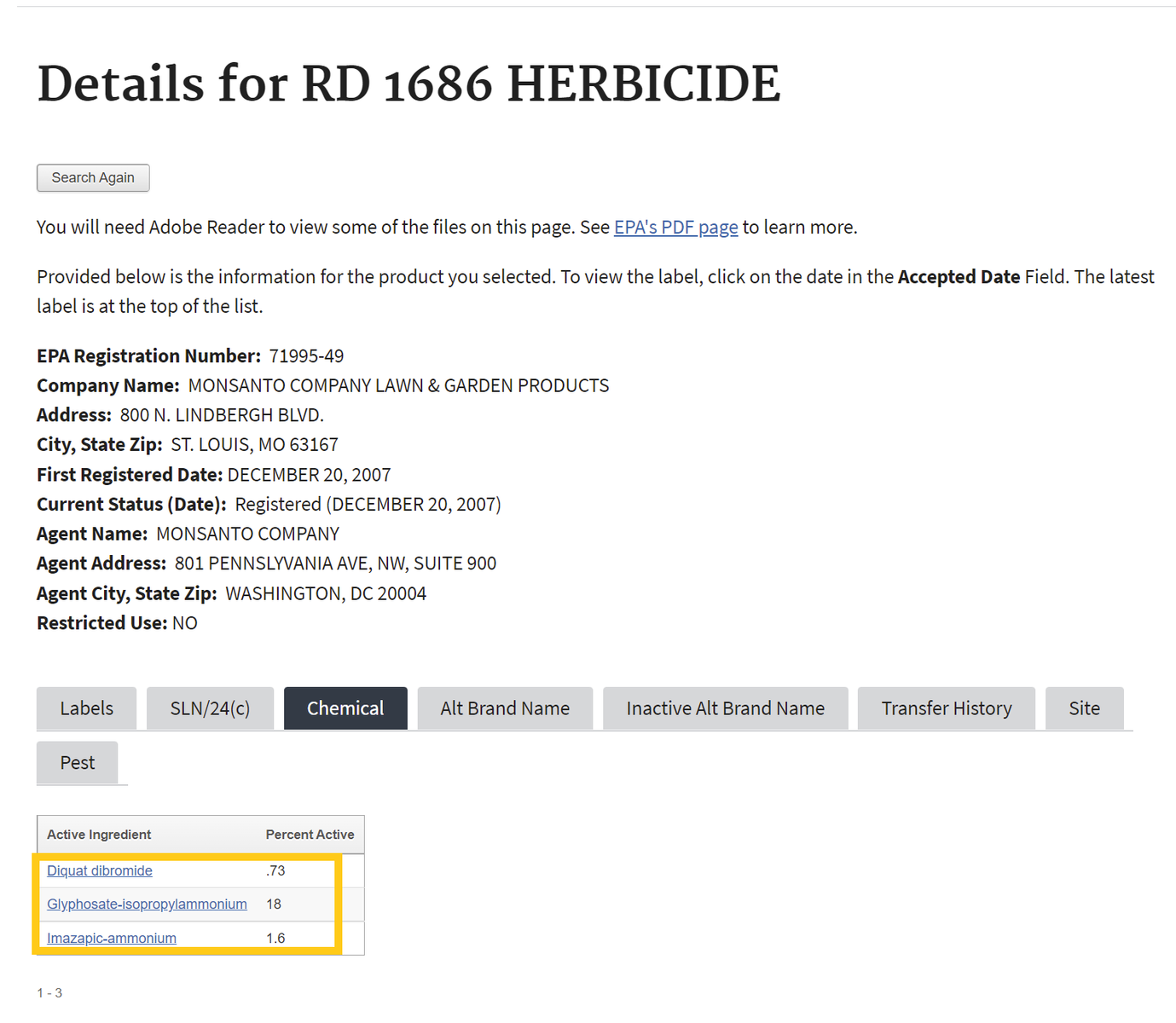
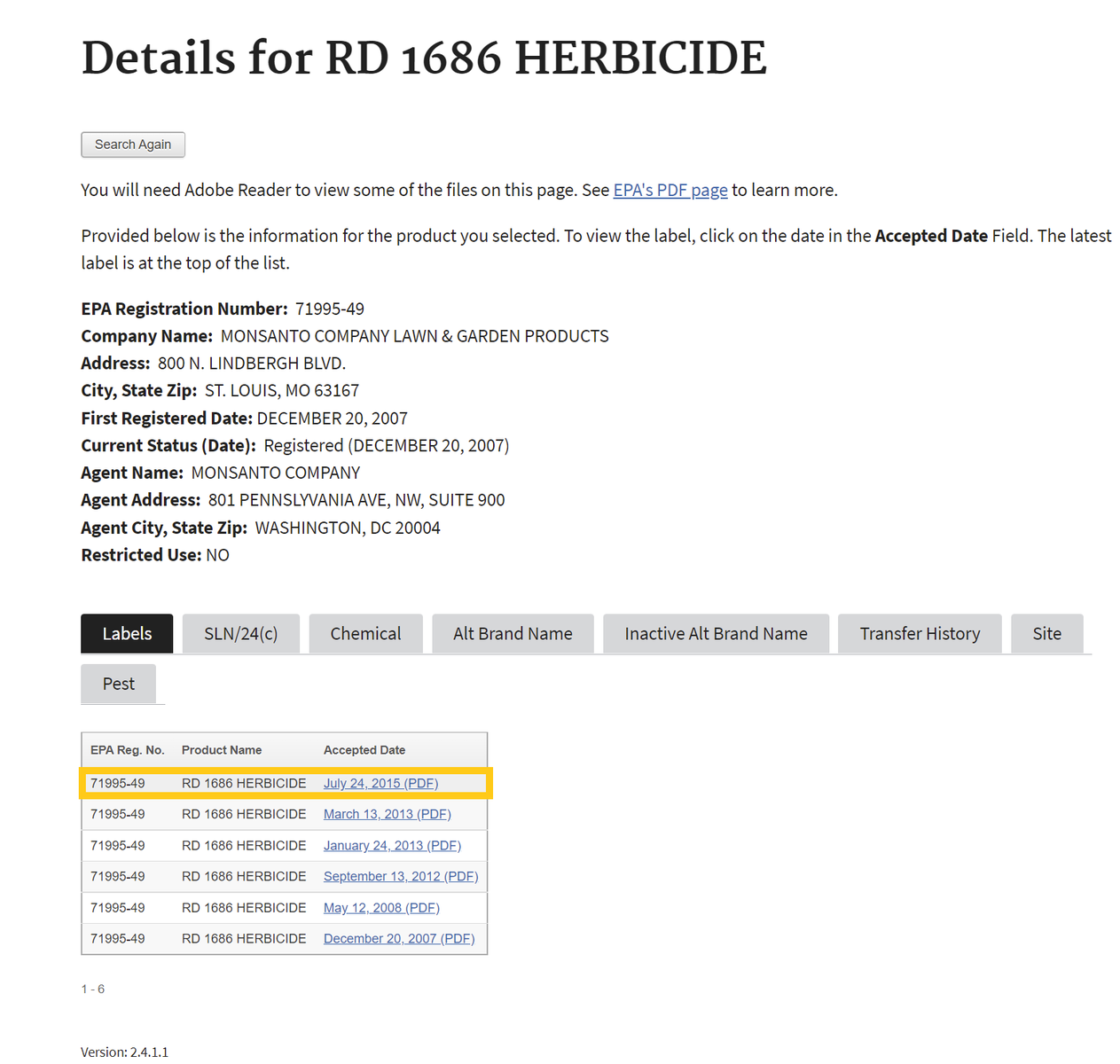
If one selects the chemical ingredients tab, skip to Step 4 . If not, proceed to step number 3 - To find the active ingredient(s) on the label, search for the page in the document containing the date of registration. Usually, the active ingredients section occurs within the first few pages of the label document.
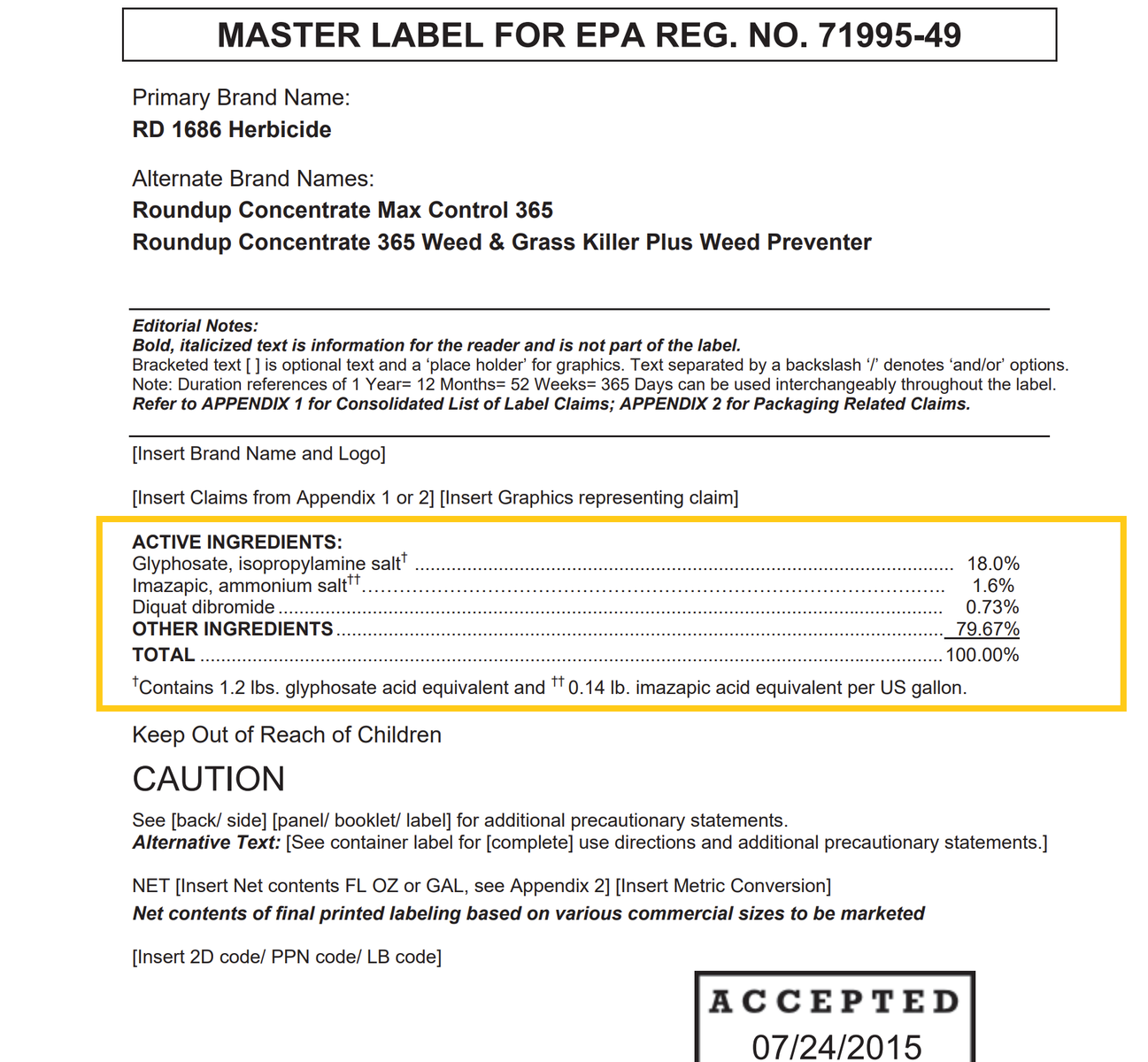
- Return to the Beyond Pesticides Gateway and search for the active ingredient name in the yellow box to the right or from the list below.
Dichlorvos (DDVP)
General Information
- Fact Sheet: DDVP.pdf
- Product Names:
- Chemical Class: Organophosphate insecticide
- Uses: Agricultural sites, commercial, institutional and industrial sites; in and around homes; on pets,in greenhouses; mushroom houses; storage areas for bulk, packaged and bagged raw and processed agricultural commodities; food manufacturing/processing plants; animal premises; and non-food areas of food-handling establishments.
Target pests are flies, gnats, mosquitoes, chiggers, ticks, cockroaches, armyworms, chinch bugs, clover mites, crickets, cutworms, grasshoppers, and sod webworms.
- Alternatives: Organic Agriculture, Least-Toxic Insect Control, Least-Toxic Pet Care
- Beyond Pesticides rating: Toxic
Health and Environmental Effects
- Cancer: Possible (10), Yes (21)
- Endocrine Disruption: Not documented
- Reproductive Effects: Yes (22)
- Neurotoxicity: Yes (4)
- Kidney/Liver Damage: Yes (4)
- Sensitizer/ Irritant: Yes (4)
- Birth/Developmental: Not documented
- Detected in Groundwater: Not documented
- Potential Leacher: Yes (4)
- Toxic to Birds: Yes (8)
- Toxic to Fish/Aquatic Organisms: Yes (8)
- Toxic to Bees: Yes (4)
Residential Uses as Found in the ManageSafe™ Database
Additional Information
- Regulatory Status:
- EPA DDVP Fact Sheets
- EPA Reregistration Eligibility Decision (RED) signed (7/2006)
- Beyond Pesticides' OP cumulative risk RED comments (2002)
- California Environmental Protection Agency: Dichlorvos (DDVP) Risk Characterization Document (1996)
- Supporting information:
- Daily News Blog entries (Beyond Pesticides)
- PAN Pesticides Database: Dichlorvos (Pesticide Action Network)
- PAN International List of Highly Hazardous Pesticides (12/2024)
- Studies:
- Effects of a mixture of pesticides on the adult female reproductive system of Sprague-Dawley, Wistar, and Lewis rats. Pascotto VM, Guerra MT, Franci JA, et al. 2015. J Toxicol Environ Health A. 78(9):602-16
- Home pesticide use and childhood cancer: A case-control study. Leiss, J., et al. 1995. American Journal of Public Health 85:249-252
- Incident Diabetes and Pesticide Exposure among Licensed Pesticide Applicators: Agricultural Health Study, 1993–2003. Montgomery et al. American Journal of Epidemiology 2008 167(10):1235-1246
- Effects of Dichlorvos on cardiac cells: Toxicity and molecular mechanism of action. Salem, I.B., Boussabbeh, M., Da Silva, J.P., Saidi, N.E., Abid-Essefi, S. and Lemaire, C., 2023. Chemosphere, 330, p.138714.
- Predicting the relationship between pesticide genotoxicity and breast cancer risk in South Indian women in in vitro and in vivo experiments . Sasikala, S. et al. (2023) ‘Predicting the relationship between pesticide genotoxicity and breast cancer risk in south Indian women in in vitro and in vivo experiments’, Scientific Reports, 13(1). doi:10.1038/s41598-023-35552-3.
- Pesticide-Induced Inflammation at a Glance. Lopes-Ferreira, M. et al. (2023) ‘Pesticide-induced inflammation at a glance’, Toxics, 11(11), p. 896. doi:10.3390/toxics11110896.
- Maternal exposure to the mixture of organophosphorus pesticides induces reproductive dysfunction in the offspring. Yu, Y., Yang, A., Zhang, J., & Hu, S. (2013). Maternal exposure to the mixture of organophosphorus pesticides induces reproductive dysfunction in the offspring. Environmental toxicology, 28(9), 507–515. https://doi.org/10.1002/tox.20741
- Persistence of aerially-sprayed naled in coastal sediments. Bamiduro, G. J., Kumar, N., Solo-Gabriele, H. M., & Zahran, E. M. (2021). Persistence of aerially-sprayed naled in coastal sediments. The Science of the total environment, 794, 148701. https://doi.org/10.1016/j.scitotenv.2021.148701
- Field Assessment of Naled and Its Primary Degradation Product (Dichlorvos) in Aquatic Ecosystems Following Aerial Ultra-low Volume Application for Mosquito Control. Smith, C.D., Hladik, M.L., Kuivila, K.M. et al. Field Assessment of Naled and Its Primary Degradation Product (Dichlorvos) in Aquatic Ecosystems Following Aerial Ultra-low Volume Application for Mosquito Control. Arch Environ Contam Toxicol 84, 307–317 (2023). https://doi.org/10.1007/s00244-023-00981-8
- Acute toxicity and risk assessment of permethrin, naled, and dichlorvos to larval butterflies via ingestion of contaminated foliage. Hoang, T. C., & Rand, G. M. (2015). Acute toxicity and risk assessment of permethrin, naled, and dichlorvos to larval butterflies via ingestion of contaminated foliage. Chemosphere, 120, 714–721. https://doi.org/10.1016/j.chemosphere.2014.10.040
- Mosquito control insecticides: a probabilistic ecological risk assessment on drift exposures of naled, dichlorvos (naled metabolite) and permethrin to adult butterflies. Hoang, T. C., & Rand, G. M. (2015). Mosquito control insecticides: a probabilistic ecological risk assessment on drift exposures of naled, dichlorvos (naled metabolite) and permethrin to adult butterflies. The Science of the total environment, 502, 252–265. https://doi.org/10.1016/j.scitotenv.2014.09.027
- Monitoring the aquatic toxicity of mosquito vector control spray pesticides to freshwater receiving waters. Phillips, B. M., Anderson, B. S., Voorhees, J. P., Siegler, K., Denton, D., TenBrook, P., Larsen, K., Isorena, P., & Tjeerdema, R. S. (2014). Monitoring the aquatic toxicity of mosquito vector control spray pesticides to freshwater receiving waters. Integrated environmental assessment and management, 10(3), 449–455. https://doi.org/10.1002/ieam.1534
- Use of butterflies as nontarget insect test species and the acute toxicity and hazard of mosquito control insecticides. Hoang, T. C., Pryor, R. L., Rand, G. M., & Frakes, R. A. (2011). Use of butterflies as nontarget insect test species and the acute toxicity and hazard of mosquito control insecticides. Environmental toxicology and chemistry, 30(4), 997–1005. https://doi.org/10.1002/etc.462
- Impaired mitochondrial energy metabolism and neuronal apoptotic cell death after chronic dichlorvos (OP) exposure in rat brain. Kaur, P., Radotra, B., Minz, R. W., & Gill, K. D. (2007). Impaired mitochondrial energy metabolism and neuronal apoptotic cell death after chronic dichlorvos (OP) exposure in rat brain. Neurotoxicology, 28(6), 1208–1219. https://doi.org/10.1016/j.neuro.2007.08.001
- Nigrostriatal neuronal death following chronic dichlorvos exposure: crosstalk between mitochondrial impairments, α synuclein aggregation, oxidative damage and behavioral changes. BK, B., Bal, A., Kandimalla, R.J. et al. Nigrostriatal neuronal death following chronic dichlorvos exposure: crosstalk between mitochondrial impairments, α synuclein aggregation, oxidative damage and behavioral changes. Mol Brain 3, 35 (2010). https://doi.org/10.1186/1756-6606-3-35
- Mapping pesticide-induced metabolic alterations in human gut bacteria. Chen, L. et al. (2025) Mapping pesticide-induced metabolic alterations in human gut bacteria, Nature Communications. Available at: https://www.nature.com/articles/s41467-025-59747-6.
- Exposure to Dichlorvos pesticide alters the morphology of and lipid metabolism in the ventral prostate of rats. Quintino-Ottonicar GG, Silva LRd, Maria VLRdS, Pizzo EM, Santana ACPd, Lenharo NR, Pinho CF and Pereira S (2023) Exposure to Dichlorvos pesticide alters the morphology of and lipid metabolism in the ventral prostate of rats. Front. Toxicol. 5:1207612. doi: 10.3389/ftox.2023.1207612
- Caval syndrome in a Dirofilaria immitis-infected dog treated with dichlorvos. Eaton, K. A., & Rosol, T. J. (1989). Caval syndrome in a Dirofilaria immitis-infected dog treated with dichlorvos. Journal of the American Veterinary Medical Association, 195(2), 223–224.
- Dichlorvos toxicity: A public health perspective. Okoroiwu, H. U., & Iwara, I. A. (2018). Dichlorvos toxicity: A public health perspective. Interdisciplinary toxicology, 11(2), 129–137. https://doi.org/10.2478/intox-2018-0009
- Incident diabetes and pesticide exposure among licensed pesticide applicators: Agricultural Health Study, 1993-2003. Montgomery, M. P., Kamel, F., Saldana, T. M., Alavanja, M. C., & Sandler, D. P. (2008). Incident diabetes and pesticide exposure among licensed pesticide applicators: Agricultural Health Study, 1993-2003. American journal of epidemiology, 167(10), 1235–1246. https://doi.org/10.1093/aje/kwn028
- Toxic nuclear effects of the organophosphorus insecticide Dichlorvos (DDVP) in human peripheral blood lymphocytes. Eroğlu H. E. (2009). Toxic nuclear effects of the organophosphorus insecticide Dichlorvos (DDVP) in human peripheral blood lymphocytes. Acta biologica Hungarica, 60(4), 409–416. https://doi.org/10.1556/ABiol.60.2009.4.7
- Temporal trends of agricultural organophosphate pesticide use in California and proximity to pregnant people in 2021. Rotkin-Ellman, M., Carpenter, C., Richardson, M.J. et al. Temporal trends of agricultural organophosphate pesticide use in California and proximity to pregnant people in 2021. BMC Public Health 25, 3121 (2025). https://doi.org/10.1186/s12889-025-23939-y
- Cellular metabolism and health impacts of dichlorvos: Occurrence, detection, prevention, and remedial strategies-A review. Saravanakumar, K., Park, S., Vijayasarathy, S., Swaminathan, A., Sivasantosh, S., Kim, Y., Yoo, G., Madhumitha, H., MubarakAli, D., & Cho, N. (2024). Cellular metabolism and health impacts of dichlorvos: Occurrence, detection, prevention, and remedial strategies-A review. Environmental research, 242, 117600. https://doi.org/10.1016/j.envres.2023.117600








.png)
